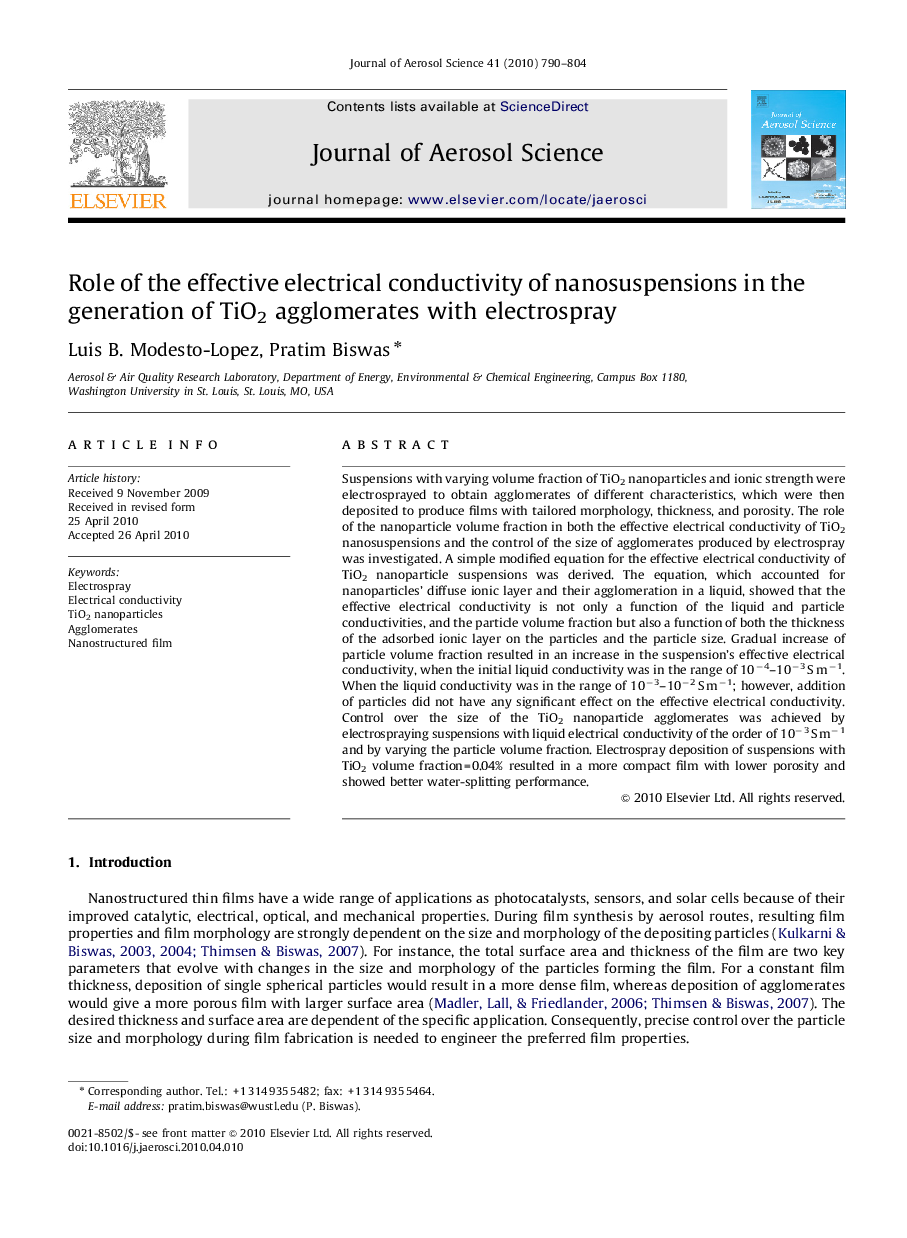| Article ID | Journal | Published Year | Pages | File Type |
|---|---|---|---|---|
| 4452833 | Journal of Aerosol Science | 2010 | 15 Pages |
Suspensions with varying volume fraction of TiO2 nanoparticles and ionic strength were electrosprayed to obtain agglomerates of different characteristics, which were then deposited to produce films with tailored morphology, thickness, and porosity. The role of the nanoparticle volume fraction in both the effective electrical conductivity of TiO2 nanosuspensions and the control of the size of agglomerates produced by electrospray was investigated. A simple modified equation for the effective electrical conductivity of TiO2 nanoparticle suspensions was derived. The equation, which accounted for nanoparticles' diffuse ionic layer and their agglomeration in a liquid, showed that the effective electrical conductivity is not only a function of the liquid and particle conductivities, and the particle volume fraction but also a function of both the thickness of the adsorbed ionic layer on the particles and the particle size. Gradual increase of particle volume fraction resulted in an increase in the suspension's effective electrical conductivity, when the initial liquid conductivity was in the range of 10−4–10−3 S m−1. When the liquid conductivity was in the range of 10−3–10−2 S m−1; however, addition of particles did not have any significant effect on the effective electrical conductivity. Control over the size of the TiO2 nanoparticle agglomerates was achieved by electrospraying suspensions with liquid electrical conductivity of the order of 10−3 S m−1 and by varying the particle volume fraction. Electrospray deposition of suspensions with TiO2 volume fraction=0.04% resulted in a more compact film with lower porosity and showed better water-splitting performance.
